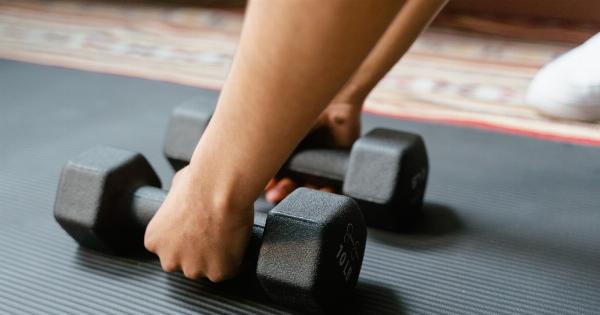Exercising after experiencing a heart attack or stroke is a vital component of rehabilitation and recovery.
The American Union of Cardiology (AUC) has provided guidelines to help individuals navigate exercise routines and ensure they are engaging in appropriate physical activity post-infraction or stroke. These guidelines are designed to promote overall cardiovascular health, improve strength and endurance, and reduce the risk of future cardiovascular events. It is important to consult with a healthcare professional before starting any exercise program.
1. Start Slowly and Progress Gradually
The AUC emphasizes the importance of starting exercise programs slowly and gradually, especially for individuals who have experienced a heart attack or stroke. It is essential to give the body time to adjust and build up strength over time.
Begin with short periods of exercise, such as 5-10 minutes, and gradually increase the duration as tolerated.
2. Aerobic Exercise Recommendations
Aerobic exercises, also known as cardio exercises, are crucial for improving cardiovascular health.
The AUC suggests that individuals aim for at least 150 minutes of moderate-intensity aerobic exercise or 75 minutes of vigorous-intensity aerobic exercise per week. Examples of moderate-intensity aerobic activities include brisk walking, cycling, swimming, or using an elliptical machine.
Vigorous-intensity activities may include running, high-intensity interval training (HIIT), or playing a sport like basketball or soccer.
3. Strength Training Benefits
Strength training exercises are essential for regaining muscle strength and enhancing overall functional abilities. The AUC recommends including strength training exercises at least two days per week.
These exercises can involve free weights, resistance bands, weight machines, or bodyweight exercises such as push-ups and squats. It is important to focus on all major muscle groups, including the chest, back, arms, legs, and core.
4. Flexibility and Stretching
Flexibility exercises help improve joint range of motion, enhance muscle flexibility, and reduce the risk of injury. The AUC advises including stretching exercises at least two days per week.
Static stretches, where you hold a stretch for 15-30 seconds without bouncing, are the most commonly recommended. Examples of flexibility exercises include shoulder stretches, hamstring stretches, and yoga poses.
5. Balance and Coordination
Balance and coordination exercises are vital, especially for individuals who have experienced a stroke. These exercises aim to improve stability, prevent falls, and enhance overall mobility.
The AUC suggests incorporating balance exercises like standing on one leg, heel-to-toe walk, or tai chi at least two days per week.
6. Monitoring Intensity
Monitoring exercise intensity is crucial to ensure safety and effectiveness.
The AUC recommends using the Borg Rating of Perceived Exertion (RPE) scale, which is a subjective assessment of how hard an individual feels their body is working during exercise. It is advised to aim for an RPE of 11-14 on a scale of 6-20, indicating moderate intensity. This level of intensity should allow for conversation while exercising without being too breathless.
7. Warning Signs and Precautions
It is important to pay attention to warning signs and take necessary precautions while exercising post-infarction or stroke.
If any of the following symptoms occur during exercise, individuals should stop exercising and seek medical attention: severe chest pain or discomfort, extreme shortness of breath, dizziness or lightheadedness, irregular heartbeat, or intense fatigue.
8. Regular Monitoring and Progression
Regular monitoring of progress is crucial to determine if the exercise program is appropriate and effective. The AUC advises individuals to keep track of their exercise duration, frequency, and intensity.
By monitoring progress, adjustments can be made to the exercise routine to continue challenging the body and achieving cardiovascular improvements.
9. Exercise in a Safe Environment
Choosing a safe exercise environment is essential for minimizing risks. The AUC recommends exercising in controlled environments like fitness centers, rehabilitation facilities, or under the supervision of a cardiac rehab professional.
This helps ensure access to necessary equipment and trained staff who can provide guidance and assistance if needed.
10. Adherence and Lifestyle Modifications
Adherence to an exercise program and incorporating lifestyle modifications are vital to achieve long-term cardiovascular health.
The AUC emphasizes the importance of regular physical activity in combination with a healthy diet, smoking cessation, stress reduction, and adequate sleep. These lifestyle modifications work synergistically to reduce the risk of future cardiovascular events and improve overall quality of life.
Conclusion
The American Union of Cardiology provides comprehensive guidelines for individuals who have experienced a heart attack or stroke and are looking to engage in exercise programs.
These guidelines aim to enhance cardiovascular health, improve strength and endurance, and reduce the risk of future cardiovascular events. Following these recommendations, along with seeking guidance from healthcare professionals, can support a safe and effective post-infarction or stroke exercise routine.



























